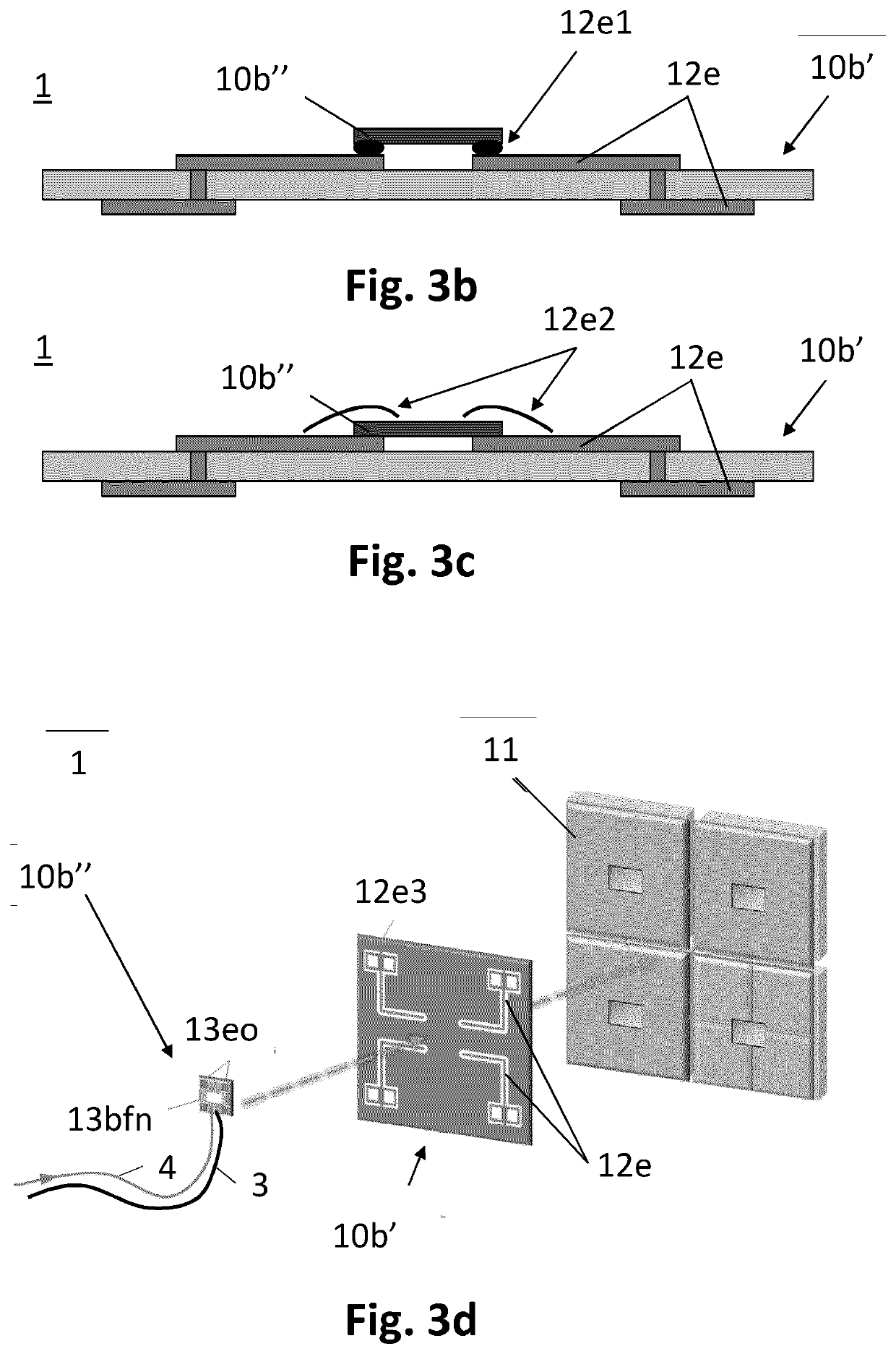Electronic device for converting a wireless signal into at least one modulated optical signal
a wireless signal and optical signal technology, applied in the field of electronic devices for converting wireless signals into modulated optical signals, can solve the problems of low conversion loss, low frequency performance, and high cost of iii-v technologies, and achieve the effect of broad frequency performance and low conversion loss
- Summary
- Abstract
- Description
- Claims
- Application Information
AI Technical Summary
Benefits of technology
Problems solved by technology
Method used
Image
Examples
first embodiment
[0042]FIG. 1a shows an electronic device 1 for converting a wireless signal in the mm-wave or sub-THz range into at least one modulated optical signal. The electronic device 1 receives a wireless signal 2 and converts the wireless signal into at least one modulated optical signal 16, which can be transmitted by at least one optical fibre 3. FIG. 1a illustrates the case of one modulated optical signal 16 and one optical fibre 3. The wireless signal 2 is in the mm-wave or sub-THz range. According to the embodiment illustrated in FIG. 1a, at least one antenna elements 11, an electrical signal converter 13 and at least one modulator 15 are arranged on a single integrated chip 10. The at least one modulator 15 according to FIG. 1a includes one modulator. As illustrated in FIG. 1a, the single integrated chip 10 may be enclosed in a microchip package 100. The at least one antenna element 11 may include a number N of antenna elements. The at least one antenna element 11 may comprise one, tw...
second embodiment
[0043]FIG. 1b schematically shows an electronic device 1 for converting a wireless signal in the mm-wave or sub-THz range into at least one modulated optical signal 16. The electronic device 1 includes at least one antenna element 11, an electric signal converter 13, and at least one modulator 15 having the functions as described above in connection with FIG. 1a. As illustrated in FIG. 1b, the at least one antenna element 11 respectively the at least one guided electrical signal 12 include a number N=4 antenna elements respectively guided electrical signals. As illustrated in FIG. 1b, the at least one guided electrical signal 12 respectively the at least one modulator 15 includes a number M=4 guided electrical signals respectively modulators. In some embodiments of the electronic device 1, the number N may be two, four, eight, sixteen or any other number. In some embodiments of the electronic device the number M may be two, four, eight, sixteen or any other number.
[0044]As illustrat...
fourth embodiment
[0046]In a fourth embodiment, which is not illustrated in FIG. 1a or FIG. 1b or FIG. 2, the at least one antenna element 11 and the electrical signal convertor 13 may be arranged on a single integrated chip, and the at least one modulator 15 may be arranged on another single integrated chip.
PUM
 Login to View More
Login to View More Abstract
Description
Claims
Application Information
 Login to View More
Login to View More - R&D
- Intellectual Property
- Life Sciences
- Materials
- Tech Scout
- Unparalleled Data Quality
- Higher Quality Content
- 60% Fewer Hallucinations
Browse by: Latest US Patents, China's latest patents, Technical Efficacy Thesaurus, Application Domain, Technology Topic, Popular Technical Reports.
© 2025 PatSnap. All rights reserved.Legal|Privacy policy|Modern Slavery Act Transparency Statement|Sitemap|About US| Contact US: help@patsnap.com



